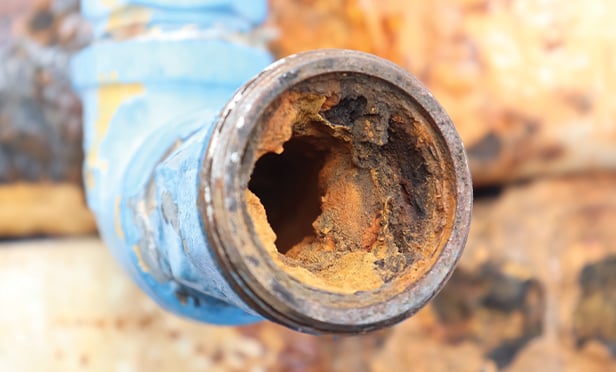 Pipe corrosion. (Photo: kittisak/Adobe Stock)
Pipe corrosion. (Photo: kittisak/Adobe Stock)
A typical failure mode of steel or cast iron water pipes is a result of corrosion. A common cause of corrosion-related failure is electric current traveling through the pipe and discharging. Figure 1 is a diagram showing how electric current traveling along a steel pipe causes localized corrosion. How does electric current find its way into a water pipe?
Recommended For You
Want to continue reading?
Become a Free PropertyCasualty360 Digital Reader
Your access to unlimited PropertyCasualty360 content isn’t changing.
Once you are an ALM digital member, you’ll receive:
- Breaking insurance news and analysis, on-site and via our newsletters and custom alerts
- Weekly Insurance Speak podcast featuring exclusive interviews with industry leaders
- Educational webcasts, white papers, and ebooks from industry thought leaders
- Critical converage of the employee benefits and financial advisory markets on our other ALM sites, BenefitsPRO and ThinkAdvisor
Already have an account? Sign In Now
© 2025 ALM Global, LLC, All Rights Reserved. Request academic re-use from www.copyright.com. All other uses, submit a request to [email protected]. For more information visit Asset & Logo Licensing.








